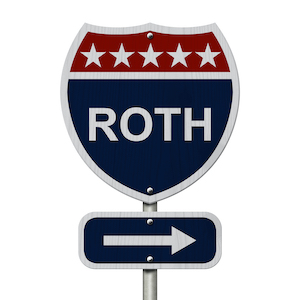 Whether in the form of an IRA or 401(k), certain aligning factors suggest that the prospects for gains in the Roth market are strong, according to a recent report.
Whether in the form of an IRA or 401(k), certain aligning factors suggest that the prospects for gains in the Roth market are strong, according to a recent report.
In the Cerulli Edge―U.S. Retirement Edition, 4Q 2020, which looks at retirement trends for 2021, the firm observes that demographic factors, the increasing prevalence of Roth in defined contribution plans and potential tax changes, fuel a bullish outlook for Roth IRAs.
In fact, Cerulli notes that the Roth IRA market has demonstrated sustained asset growth in recent years, with assets growing from $600 billion in 2014 to more than $1 trillion in 2019, representing the fastest-growing segment of the U.S. retirement market.
Moreover, the firm contends that the trend of increasing Roth options in DC plans bodes well for growth in Roth IRA assets. Citing data by Callan, the report notes that the percentage of DC plans offering Roth-designated accounts jumped from 62% in 2015 to 87% in 2019. Cerulli cautions that plan sponsor respondents to Callan’s survey skew to plans with greater than $1 billion in assets and the overall percentage of DC plans offering Roth is likely lower than that reflected in the Callan data.
Still, that data appears to be consistent with findings from PSCA’s 63rd Annual Survey of 401(k) and Profit Sharing Plans showing that Roth contributions are now permitted in three-fourths of plans based on 2019 plan-year data, up from 69% in 2018.
And as more participants accumulate Roth balances in a DC context, Roth IRAs will experience more pronounced growth from rollovers. Callan found that most plan participants roll over retirement assets to an IRA because they believe it is easier than rolling into an employer-sponsored plan or because a financial advisor suggested the move.
Cerulli notes that this development is already evidenced in data from the Investment Company Institute showing that annual Roth IRA rollovers more than doubled between 2012 and 2017—from $4.8 billion to $9.9 billion.
Demographic Factors
The bullish outlook for Roth IRA rollovers is also supported by demographic factors. According to a Cerulli survey of retirement investors, individuals under the age of 30 are more likely to own a Roth IRA, while those over the age of 50 favor traditional IRAs.
Moreover, investor contributions were the largest individual source of Roth asset growth in recent years, followed by market appreciation and Roth conversions, the report notes. Further, compared with traditional IRAs, Roth IRAs display much stronger organic growth (i.e., growth independent of market performance).
“Most Roth owners are in the phase of accumulating wealth for retirement and continue to grow their account balances,” explains Anastasia Krymkowski, associate director. “This contrasts with traditional IRA owners, who are more likely to be drawing down their savings to fund their needs in retirement.”
Legislative Changes
Legislative changes could further motivate individuals to save on a Roth basis or convert traditional balances to Roth. One of the revenue raisers Congress included in the SECURE Act was elimination of the stretch IRA, which now requires non-spousal beneficiaries to draw down the entire IRA balance within 10 years of the account owner’s death. According to Cerulli, this could motivate IRA account holders—especially those with high earning beneficiaries—to favor Roth accounts, allowing for tax-free distributions in the future.
Potential tax changes stemming from the 2020 presidential election may also impact the outlook for Roth IRAs, the report notes.
While younger savers are likely to benefit from Roth contributions, future tax rates are not set in stone. What’s more, President-elect Joe Biden has called for “equalizing the tax benefits of retirement plans” by limiting tax breaks for upper-income families and increasing benefits for low- and middle-income workers by providing a tax credit—rather than the current tax deferral arrangement—to all contributing 401(k) plan participants regardless of income level.
Some view this as a potential catalyst for increased Roth 401(k) contributions, Cerulli notes. “Higher-income individuals, who would no longer benefit from a sizable reduction in taxable income, may switch their savings basis from pre-tax to Roth,” adds Krymkowski.
As such, this could have an impact on Roth IRA asset growth. A near-term increase in Roth 401(k) contributions will likely correspond to an increase in Roth rollover flows in the intermediate and long term, as participants change jobs or retire and consolidate their savings in the IRA market.
While elements of Biden’s proposed tax plan remain uncertain, the firm suggests that retirement industry stakeholders should nonetheless consider the implications of potential revisions to the tax code. “Some proactive and well-informed participants may switch from pre-tax to Roth contributions, but most are unlikely to make a change unless motivated by guidance,” the report states, adding, “This could present an opportunity for financial advisors to add value for their clients who are saving for retirement.”

